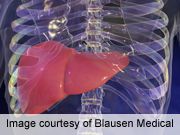Treatment Strategies in Hepatitis C
The most important treatment outcome in hepatitis C is sustained virological response, due to its impact on reducing the risks of liver-related mortality, hepatocellular carcinoma, and hepatic decompensation. The degree of baseline liver disease, IL28B genotype, and HCV genotype are important determinants of response to treatment.

Estimates suggest that if 1998 treatment practices were in place from 2005 to 2025, then 196,000 (confidence interval [CI], 178,000-214,000) hepatitis C virus (HCV)-related deaths would occur during this period in the United States. If 15% of patients were treated and sustained virological response (SVR) were achieved in 80%, then 182,000 (CI, 165,000-198,000) HCV-related deaths would occur during that period. If 50% of patients were treated and 60% SVR were achieved, the death rate would be decreased to 160,000 (CI, 145,000-175,000). If 100% of patients were treated and 60% SVR were achieved, the mortality would be decreased to 124,000 (CI, 111,000-136,000).
In a recent meta-analysis, SVR was associated with a 77% reduction in liver-related mortality, a 79% reduction in hepatocellular carcinoma (HCC), and an 84% reduction in hepatic decompensation, compared with treatment failure. These data highlight the importance of HCV treatment from a patient and public health perspective. This article, the second in a series of 3 articles focused on hepatitis C, will highlight the standard and newer treatment options in the context of guidelines and provide suggestions for incorporating newer options into treatment algorithms.
Rationale for Early and Effective Treatment
The goals of treatment are to prevent complications and death related to HCV. Since these outcomes are not easily measured due to the insidious progression of HCV complications over decades, the treatment of HCV centers around improving virological outcomes associated with quantitative polymerase chain reaction (PCR) HCV assays.
The most important outcome is SVR, because it has been linked to a reduction in mortality. SVR is defined as a negative HCV ribonucleic acid (RNA) test 24 weeks after cessation of treatment, and is generally referred to as a virological cure. A rapid virological response (RVR) is defined as the clearance of HCV from serum by week 4 using a sensitive PCR-based assay with a lower limit of detection of 50 international units (IUs)/mL, although this may change with increased sensitivity of newer assays. Achieving an RVR is a strong predictor of achieving an SVR with therapy.
An early virological response (EVR) is defined as a reduction of 2 log or more in HCV RNA level compared with baseline HCV RNA level or negative HCV RNA at treatment week 12. Failure to achieve an EVR is a powerful predictor of failure to achieve an SVR. If an EVR or RVR is achieved, an end-of-treatment response (ETR) refers to undetectable virus at the end of a 24- or 48-week course. ETR does not predict SVR, but is a necessary predecessor. A relapse is said to occur when there is a reappearance of HCV RNA in serum after therapy is discontinued, but after an ETR is documented.
When patients are still receiving treatment, several virological outcomes suggest poor response to treatment. A nonresponder refers to a patient who fails to clear HCV RNA from serum after 24 weeks of therapy, while a partial nonresponder exhibits a decrease of 2 log or less in HCV RNA, but a positive HCV RNA test result at week 24. A null nonresponder demonstrates failure to decrease HCV RNA by 2 logs or more after 24 week of therapy. A virological breakthrough occurs when there is reappearance of HCV RNA while still on therapy. These adverse virological events while on therapy are associated with a need for treatment regimen discontinuation or modification to optimize outcomes.
This is an excerpt of an article that was originally published in a supplement of the American Journal of Managed Care. To read the full text of this article, click here.
This article is also part of a continuing medical education activity focused on improving management and outcomes in hepatitis C. Click here to access this resource.